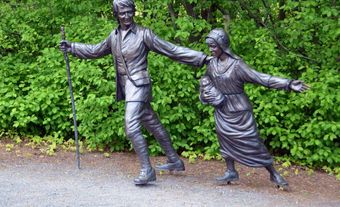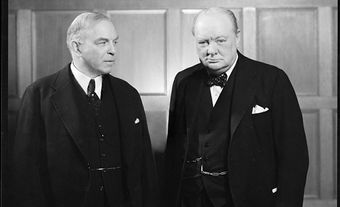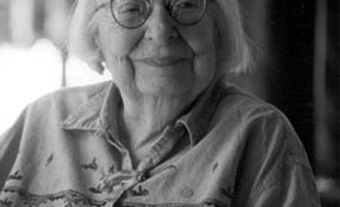Canadian Museum of Civilization
Canadian Museum of Civilization/Musée canadien des civilisations. Of all the national museums, only the Museum of Civilization is of prime importance to music, though the National Gallery owns paintings of musical interest, some of which are reproduced as illustrations in EMC (see also Art, visual), and the National Museum of Science and Technology owns sound reproduction equipment of historical significance.
Formed in 1842, the Museum Branch of the Geological Survey of Canada/Musée de la Commission géologique du Canada moved into the Victoria Memorial Museum building at Metcalfe and McLeod streets in Ottawa in 1911. The name National Museum of Canada was adopted in 1927, a division into museums of Human History took place in 1957. In 1987 the name Canadian Museum of Civilization was adopted. Three divisions of the museum have contributed to the preservation of musical heritage.
In 1991 the History Division owned some 175 European-type or exotic instruments, some of them built in Canada. The instruments had been acquired on an occasional rather than a systematic basis.
The Canadian Ethnology Service/Service canadien d'Ethnologie and the Canadian Centre for Folk Culture Studies/Centre canadien d'études sur la culture traditionnelle, in 1991 directed respectively by A. Laforêt and S. Inglis, both originated in the Anthropology Division, created in 1910 with the appointment of Edward Sapir (1884-1939), a US-educated social anthropologist and linguist of German birth. Possibly the first work of musical interest done for the new division was W.H. Mechling's transcription of Malecite and Micmac songs in New Brunswick in 1911. That same year marked the appointment of Marius Barbeau as ethnologist and anthropologist, a fruitful association that continued long past Barbeau's official retirement in 1948 and that did much to enhance the museum's fame. In 1926 Sapir was succeeded as the division's chief by Diamond Jenness (b Wellington, New Zealand, 1886, d near Ottawa 1969). Like Barbeau an Oxford-educated anthropologist, Jenness remained in the position until 1948.
In 1957, when a Folklore Section was created within the division, Carmen Roy (b Bonaventure, Gaspé, Que,1919) became its head. A specialist in French-canadian folklore, Roy had been a museum adviser since 1948. In 1966, when the Anthropology Division was divided into an Ethnology Division (renamed Ethnology Service in 1974) and a Folklore Division (renamed Canadian Centre for Folk Culture Studies in 1970), Roy became the chief of the latter, moving to the position of senior scientist in folk culture in 1977.
The responsibilities of the Ethnology Service have included the collecting, analysis, preservation, and dissemination of Native and Métis music and the housing of a large collection of approximately 1350 musical or other sound-producing instruments (see Instrument collections). By 1990 its recordings and transcriptions spanned over 80 years of collecting activities. While not all of the approximately 7000 tapes and wax cylinders were of music, they contained many traditional and new songs and about 2000 pieces of dance music (instrumental). The collectors included, in particular, Asen Balikci, Marius Barbeau, Beverley Diamond, A.T. Cringan, Diamond Jenness, Christian Leden, Maija Lutz, William Mechling, and Edward Sapir, and collecting continued. Open to researchers, the collections have made possible the study of ethnic identity, of musical styles, of instruments and of mutual influences among the indigenous peoples of Canada. In 1990, the manuscript resources included transcriptions of songs in about 50 indigenous languages from 11 linguistic families. Some were translated.
Until the early 1960s the holdings of the Folklore Division were almost exclusively in the French and Anglo-Saxon traditions. In 1962 however the museum decided to expand its research program to include Canadian folk music of other ethnic origins as well. The impressions reported in Kenneth Peacock's A Survey of Ethnic Folkmusic across Western Canada in 1963 were positive and in 1966 the first collection in this cultural area was undertaken. The federal government's multicultural policy, announced in 1971, further encouraged such investigations. An outline of the 5000-odd items of music of ethnic minorities collected under museum auspices prior to 1975 is given in CMB no. 10 (1975). At the end of the 1970s, French- and English-language materials continued to form the major holdings. In 1991 there were some 250 collections of folksongs and instrumental music on more than 3000 wax cylinders and more than 10,000 tape recordings, the majority transcribed into notation. The musical instrument collection of approximately 650 items includes instruments of various ethno-cultural groups and instruments made by contemporary Canadian makers. Among the collectors, scholars, and administrators, on staff or on contract, have been Marius Barbeau, Carmelle Bégin, Laura Boulton, Emilia Comisel, Helen Creighton, Pierre Crépeau, Annemarie Gallaugher, Roy W. Gibbons, John Glofcheskie, Pauline Haslebacher, Richard Johnston, Robert B. Klymasz, Anne Lederman, É.-Z. Massicotte, Lucien Ouellet, Paul McIntyre, Kenneth Peacock, George Proctor, Carmen Roy, Ruth Rubin, Koozma J. Tarasoff and many others. Appointed in 1975 as a researcher in the Canadian Centre for Folk Culture Studies, in 1991 Carmelle Bégin was the curator of the ethnomusicology program and Lucien Ouellet was research assistant. Bégin has been the curator of 'Shall we Dance,' a 1989 exhibition on dance traditions, and in 1991 was preparing a major exhibition on Canadian musical instruments, scheduled for 1992.
See also Ethnomusicology; Folk music

 Share on Facebook
Share on Facebook Share on X
Share on X Share by Email
Share by Email Share on Google Classroom
Share on Google Classroom


